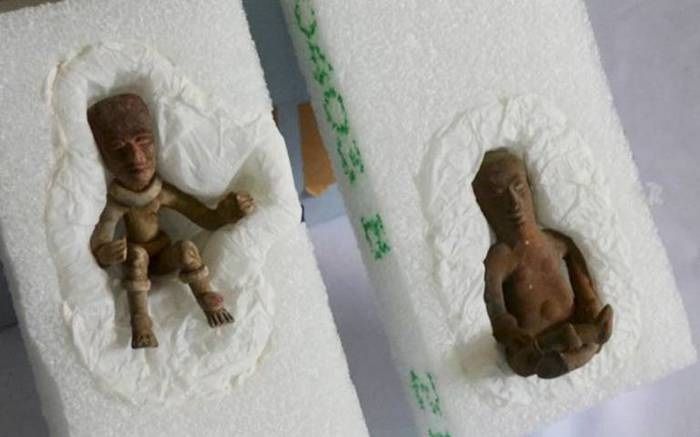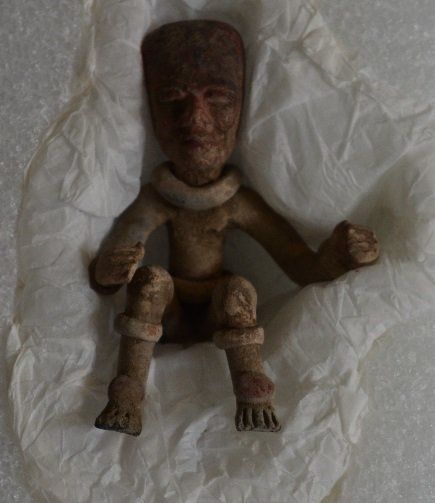Mexico recovers archaeological pieces with the help of the FBI
The return of these items is part of the FBI's commitment to locate and return cultural heritage items worldwide.

After years in the hands of an amateur collector, Mexico recovered two archaeological pieces of Teotihuacan culture (200-700 AD) with the help of the Federal Bureau of Investigation (FBI) of the United States, authorities reported Tuesday.
"These are two anthropomorphic figures made in clay using modeling, smoothing, incision, and pastillage application techniques," explained Mexican archaeologist Omar Silis García, at an event of the United States Embassy in Mexico and the National Institute of Anthropology. and History (INAH) of the Ministry of Culture of Mexico.
Both pieces, whose dimensions are 6.5 centimeters by 9 centimeters, represent a seated male character (seated), naked who wears bracelets and anklets (metal rings), necklace and sash, and his expression is dull and hairless.
The specialist said that due to observable morphological and stylistic characteristics, it was concluded that "these are Teotihuacan style figures elaborated during the Mesoamerican Classic period (200-700 AD) in the Central Mesoamerican High Plateau".

Although there was no report of theft or illegal removal or loss by the Mexican government, the pieces were found in the basement of an amateur collector and religious missionary in the state of Indiana (United States)
The finding occurred after the death of Don Miller, who died at 91 years old in 2015 and whose house was raided a year later by the FBI, after an anonymous call, in which more than 42,000 artifacts from different cultures of the world were located.
"Miller had the pieces displayed in cabinets in his basement and before he died he asked that the pieces be returned to their countries of origin," explained the deputy legal assistant to the FBI in Mexico, Edward Gallant.
Miller participated in amateur archaeological excavations in the decades of the 60s and 70s of the last century in Central and South America and perhaps at that stage, he took the opportunity to take them or buy them, and take them out of the countries illegally.
The finding was surprising since the FBI had arrived at the collector's house for a report of human remains. And in fact, they found them, for they found hundreds of human bones of Native Americans, which Miller also collected.
Gallant said that in recent years, the FBI's anti-crime team has worked with experts from institutions and museums in several countries to analyze 7,000 pieces and be able to return them, especially from China, Canada, Iraq, Peru, and Mexico.
The FBI has a database that experts from different countries have access to and in it, Mexico reviewed 5,000 pieces and only two are "archaeological goods" that belonged to Mexico.
The anthropologist Aída Castilleja, technical secretary of the INAH, said that the pieces will be reinstated and registered to know to what collection of the institute will be reinstated and may be exhibited but must also go through a process of curatorship.
Meanwhile, James Wolfe, counselor for educational and cultural affairs of the Embassy of the United States, explained that the restitution of these pieces is the result of a close collaboration between the United States and Mexico, and is part of the efforts to recover and return cultural goods.
This recovery, which began in March 2016 and ended in February 2019, was completed under the Treaty of Mexico-United States Cooperation for the Recovery and Return of Stolen Archaeological, Historical and Cultural Assets, signed on July 17, 1970.




